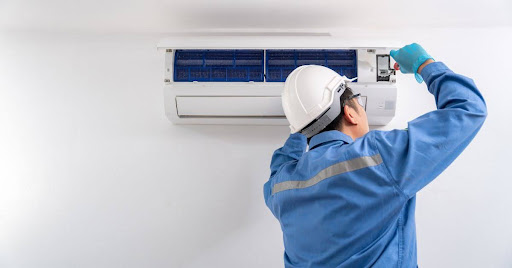Air conditioning systems save lives in the summer heat. If your air conditioner breaks, it could be a nightmare. Learn how to diagnose and fix common air conditioner issues to save time and money. We’ll explore air conditioning repair’s intricacies in this thorough book, giving you the confidence and skills to solve problems.
Understanding the Most Common AC Issues
The most common problem, refrigerant leakage, can cause insufficient cooling and higher energy expenses. One of the most typical issues. Hissing, ice buildup on refrigerant pipes, and decreased cooling performance are symptoms. Leak repairs and refrigerant replenishment should be done by a trained professional for safety and environmental compliance.
When airflow is restricted or refrigerant is low, evaporator coils might freeze. This can hinder cooling. Defrosting the coils and fixing the cause, such as dirty air filters or blocked vents, prevents future issues.
Air filters can become dirty or clogged with dust and debris, reducing airflow and system performance. Cleaning or replacing filters regularly improves air quality and extends the life of your air conditioning equipment.
Starting and maintaining cooling need capacitors and compressors. A failing capacitor or compressor causes frequent cycling, loud noises, or inability to start the machine. Professional diagnosis and replacement may be needed to restore optimal function.
Loose connections or damaged components might disrupt the electrical supply to your air conditioning machine, causing malfunctions or system failure. Electrical faults must be addressed immediately to avoid risk and harm.
DIY Troubleshooting Tips
Make sure your thermostat is set to the right temperature and mode when checking its settings. Replace batteries as needed and consider a programmable or smart thermostat to boost energy efficiency.
Dust and dirt in air vents and ducts reduce airflow, reducing cooling system efficiency. Use a vacuum cleaner or other duct cleaning tools to promote airflow and clear clogs.
Properly placed insulation maintains temperatures and reduces energy use. Check for insulation damage, especially around windows, doors, and attics, and ac repair or replace as needed.
Lubricating Moving Parts Fan motors and bearings need lubrication to last longer and reduce friction. Use manufacturer-approved lubricants and follow your air conditioning equipment’s directions for best results.
The condensate drainage system must be clear of debris to prevent water backup and damage. Inspect and clean the condensate drain line and pan regularly to maintain their condition.
Knowing when to call a pro is crucial
Even though DIY troubleshooting can fix minor air conditioning issues, many require professional help. You may need professional help if you encounter:
- Continued refrigerant leaks Faulty electrical components or wiring issues
- Complex compressor or capacitor failures
- Insufficient cooling despite DIY approaches
- Unusual smells, sounds, or performance
Final Remarks
Air conditioning repair experts can keep their homes at their most comfortable and efficient year-round. By understanding air conditioner issues, using DIY troubleshooting, and knowing when to call a professional, you can ensure your air conditioner works properly. Maintenance and repairs should be done as soon as possible to extend the life of your air conditioning contractors system and ensure you always enjoy cold, refreshing air.

